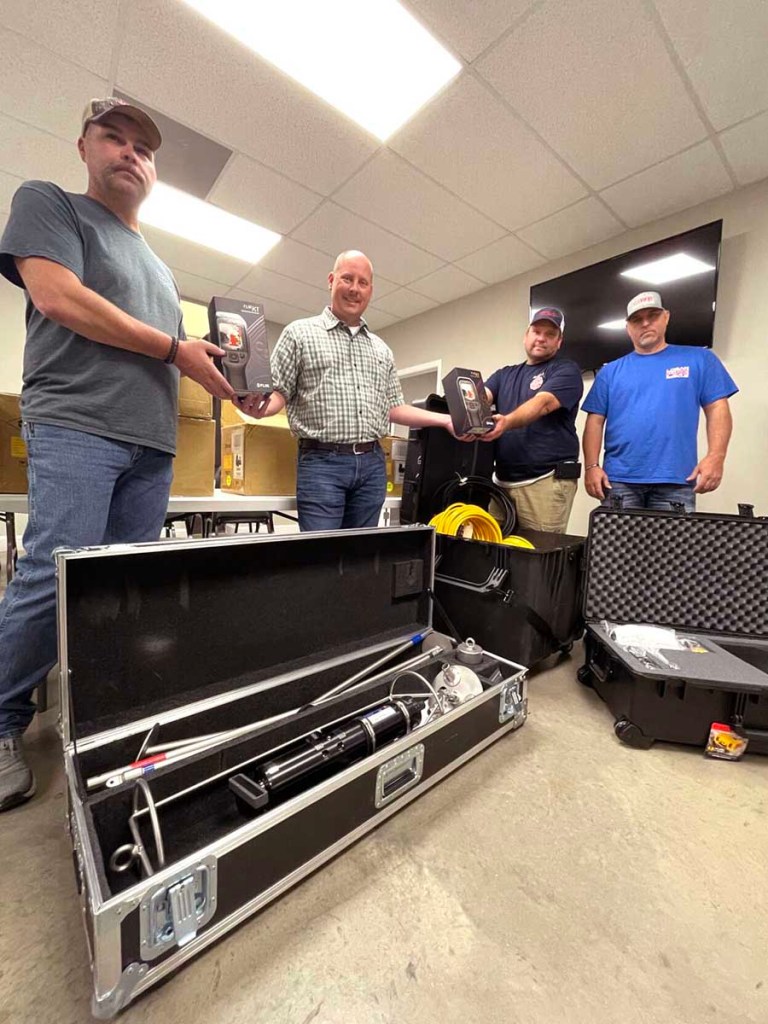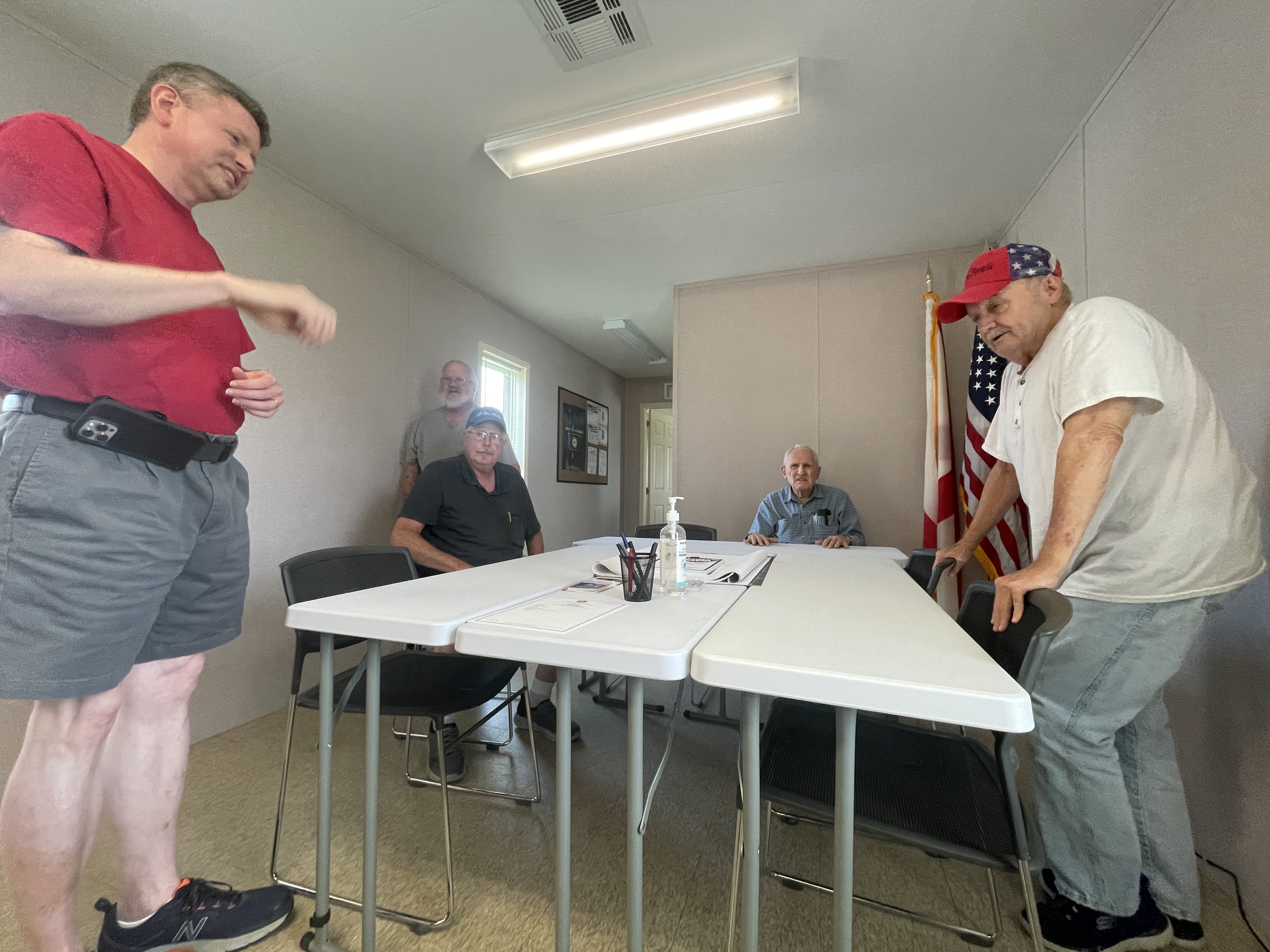County fire departments awarded new imaging equipment
Published 1:00 am Saturday, November 25, 2023

- County Commissioner Corey Freeman, second from left, with local fire chiefs Tim Martin, West Point; Brandon Williams, Crane Hil; and Toby Bates, Logan, Thursday Nov. 16.
Culllman County firefighters will soon have more equipment to help them look into the heart of a fire.
Locally raised funds combined with a $100,000 supplement from the Cullman County Commission’s American Rescue Plan fund have given fire departments throughout the county access to new imaging equipment which will aide rescue workers in a variety of situations.
County Commissioner Corey Freeman said the Cullman County Fire Association approached the commission requesting funding assistance for several unique projects. He said that while the commission does provide funding for local fire departments, the request exceeded what the county’s general budget would allow.
After gaining the state’s approval, Freeman — who also acts as a volunteer with the Fire Association — said the commission was able to provide $100,000 in ARPA funds to be used to benefit the entire association.
“We had meetings with the association and asked what tools they could use for each department. What would benefit Cullman County across the board instead of what might benefit this department or that department,” Freeman said.
Through that series of meeting, Freeman said it was determined the most beneficial purchase would be additional thermal imaging cameras which are used to detect hot spots within a structure fire and even to assist with locating missing persons.
“There’s just a really wide range of things you can do to benefit from a thermal imaging camera,” Freeman said.
Each of the county’s 26 fire departments were awarded two additional camera’s using roughly $26,000 of the allocated ARPA funds.
Freeman said around $5,000 was also allocated to purchase equipment and supplies for the county’s Hazmat division. The bulk of the ARPA funds however was used to purchase specialty sonar equipment primarily to benefit the three departments which cover the areas surrounding Smith Lake.
Freeman has worked as a diver with body-recovery units in the past and said Smith Lake presents a number of unique challenges in locating drowning victims. He said low temperatures in the deepest parts of the lake, the lack of current beneath the surface and sediment accumulated on the remaining trees and structures on the lake floor all make recovery efforts extremely difficult.
“With all of that being said, that is why we say this could be your grave if you drown here,” Freeman said.
Freeman said the Trimble Fire Department has historically primarily focused on diving efforts but the Crane Hill and Logan departments have been making strides to be able to better aide recovery efforts. He said the Logan Department took out a loan to purchase a boat and together with Crane Hill purchased a towfish sonar system.
The remaining ARPA funds were used by the commission to purchase a Kongsburg sonar system to be used in tandem with the preexisting system. Unlike the towfish, which scans the lake while being drug behind a boat, Freeman said the Kongsburg is set up on a tripod and can be lowered all the way to the lake floor.
“You can drop this as deep as you want and it will scan the bottom. The closer the sonar is, the better the image is. So with this being down low it’ll give you a clear image of what’s there,” Freeman said.
Freeman said the obvious preferred outcome would be for boaters to take precautionary measures to avoid accidents to begin with. But he hopes this new equipment will help emergency workers recover those who do become victims to drowning and provide family and friends a much-needed sense of closure.
“When you lose a loved one and you can’t find them, obviously you want closure. You want to be able to have the peace of mind to know where your loved one is buried, or whatever else is done,” Freeman said.





